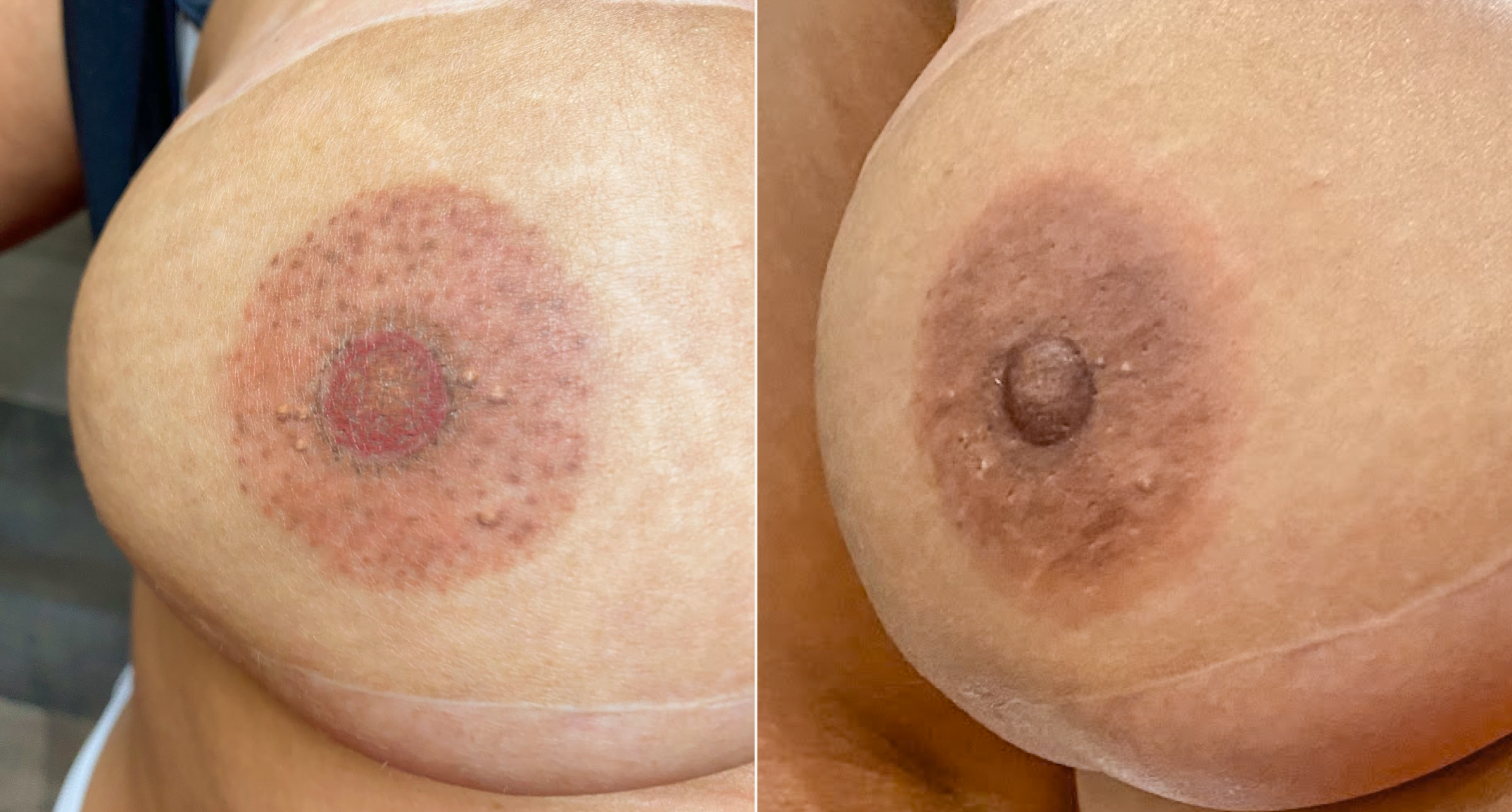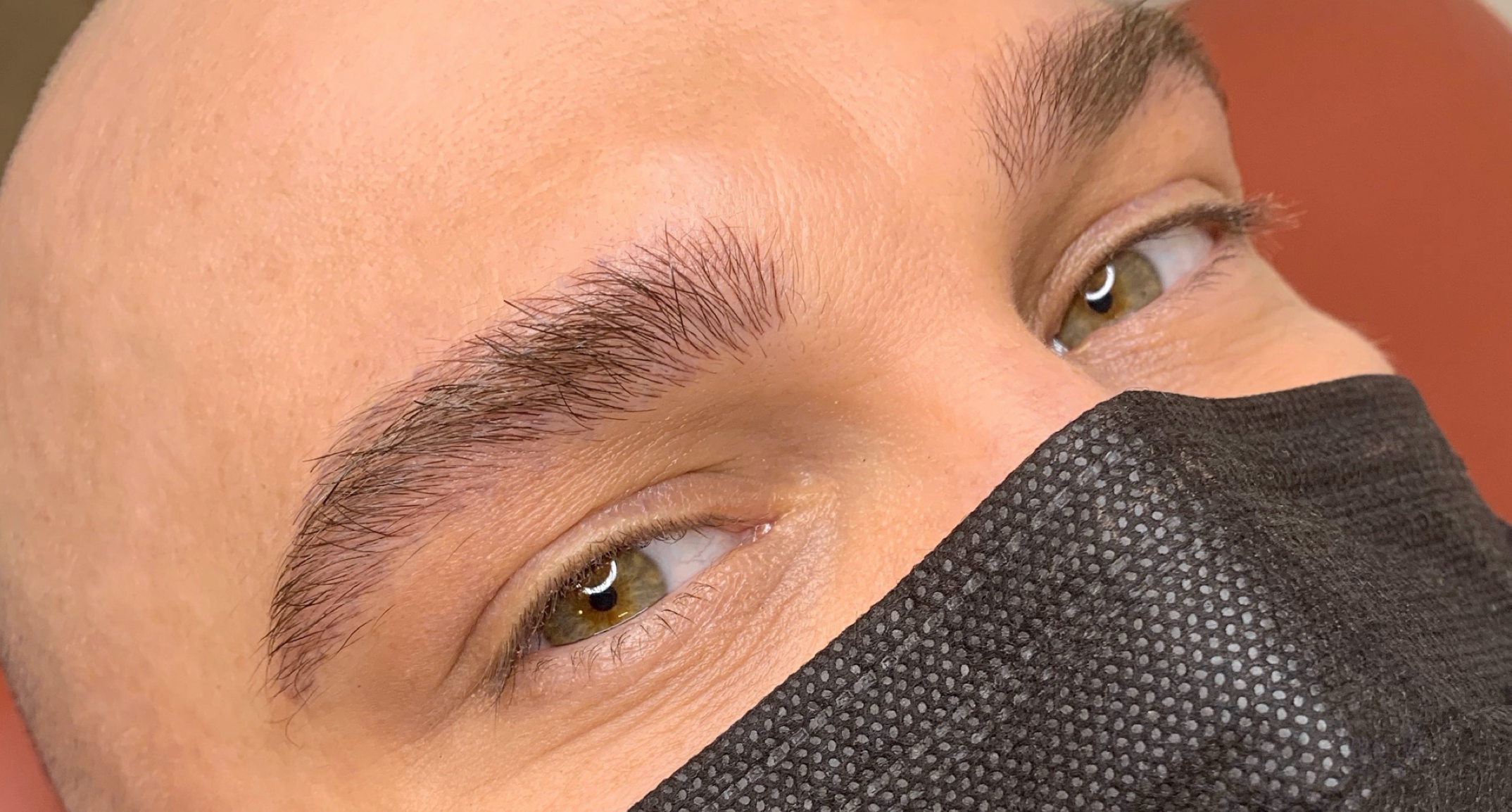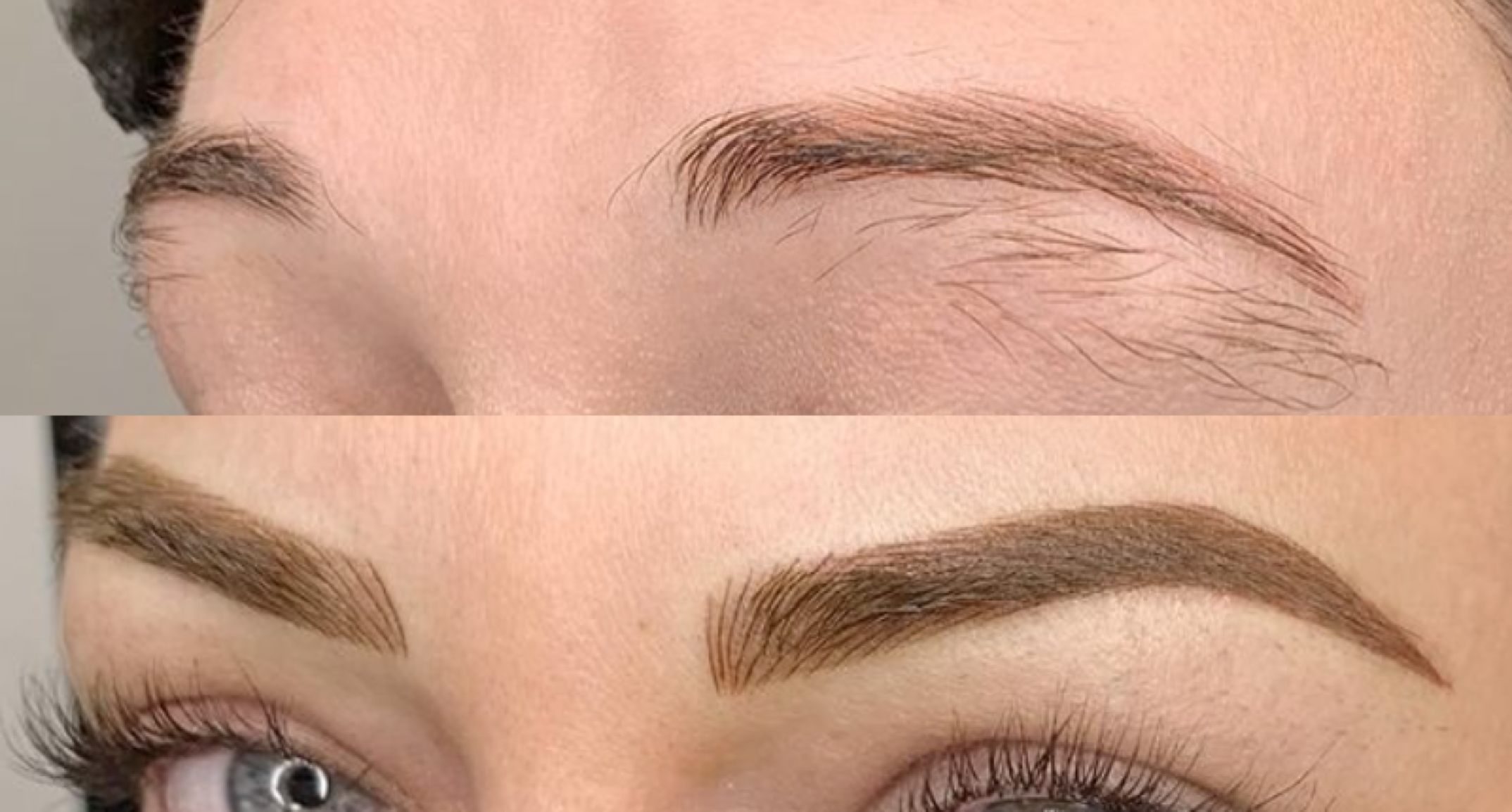
Bilateral Areola Tattoo Cover-Up

What makes a great areola tattoo artist? On one hand, it comes with a deep understanding of the types of cancer and the types of reconstructive surgeries your client has been through. On the other hand, it comes with regular drawing practice to make your areola ‘come to life’. Permanent makeup and body tattoo artists meet clients at the end of their journeys battling cancer. And while these journeys are long, difficult and emotionally taxing on cancer survivors and their loved ones, the advances made in areola tattooing give tattoo artists the opportunity to mark the end of a journey on a relatively sweeter note.
Terry Lively, in collaboration with The Collective, created the most comprehensive online 3D Areola Tattooing course available today.
In this case study, areola tattoo artist and PMU veteran Terry Lively shares with us her work in tattooing a client who had been through a bilateral reconstruction and covering up the areola tattoo that the surgeon’s nurse had attempted during the reconstructive surgery. Her goal was to make the nipple darker, make it look more three-dimensional, and all in all, as realistic and as natural as possible.
Beginning her tattooing career in 1999, Terry has trained in permanent makeup up as well as traditional body art tattooing. She is a certified instructor through the Society of Permanent Cosmetic Professionals and teaches fundamentals, advanced and speciality classes. Terry is referred to breast cancer patients needing areola tattooing from over 15 surgeons in the South Central Texas area.

Keep reading to understand Terry’s approach to identifying client wants & needs, and creating the best 3D areola tattoo there is - so much so that you won’t be able to tell that it’s a tattoo at first glance!

Procedure Details
“This client had bilateral reconstruction surgery with prior tattooing by the physicians’s nurse who had very little tattoo experience.”
Client’s Goal
“The client requested a darker nipple and more 3D realism. Using a darker nipple colour here was necessary.”
Design Approach
“This is an example of an areola done by pointillism - a technique I believe gives a poor result for this type of procedure. My game plan was to approach this as a tattoo cover-up. I needed to deepen the colour with light and shade and add more contrast and value.”
Additionally, when beginning your journey in areola tattooing, Terry advises to “Collect and study photos of women’s natural breasts. Use these photos as art references when practicing your drawing skills. When you sit down to draw and are looking at your reference photos, make sure you are in a quiet place with no distractions. This will help you get in your “right brain” mode, which is visual and helps with creative processes. Make sure to really focus on details that you would not normally notice at a glance. The more you practice drawing this way, the easier it will come when you are tattooing a client where there ARE distractions.”
Technique(s) Required
“I packed colour in with my 1015CM at a 30-degree angle.”

1015CM
Tool’s Used
Every areola client you have will want something slightly or greatly different from other clients prior. It is crucial to feel comfortable in your choice of pigments you use for this service. And while we have a wide array of areola colours available to us on the market today, you don’t need to use or know all of them. The secret here is in detailed note taking and narrowing down on a selection of pigments that you are confident working in, and that give you the flexibility to address multiple client needs.
On this matter, Terry recommends “Get to know your pigments. Do drawdowns (color swatches) for each pigment color and take notes on what you see. Keep your drawdowns and notes for each color in a binder so that you can easily refer back to them. After tattooing a particular color on a client and then seeing how it comes back healed, go back to your binder of color swatches and make more notes on how that particular color healed. Over time, you will narrow down your colors to a specific few that you can rely on for consistent results.”
“Pigments used for this case study:

For the areola: World Famous - Tan Mink


For the areola: World Famous - Warm Mink and Perma Blend - Middle Mixer (50/50)”
The key to a beautiful, realistic areola tattoo is to gain a deep understanding for all aspects of the procedure. Knowing how to use your machine, selecting the most effective cartridges and trying different configurations to understand what works best for you will be instrumental in building your confidence in this procedure. When it comes to machine work, Terry says “Understand your equipment. For instance, notice how turning the power settings up or down while tattooing affects the results. Work with one tattoo machine so that you become very familiar with it and develop muscle memory using that particular machine.”
Equipment Used
1205RS was used for the nipple along with a 1001RL for smaller detail work.”
Final & Healed Results


Terry’s Tips
Effects of radiation on areola tattoo results
“Sometimes a client will have radiation done on one breast only. Understand that this skin is compromised, must be worked gently and slowly, and usually comes back healed lighter on the radiated side. At your second visit, you can adjust the color on that side if need be.”
Scars
“If you have a light colored scar going through a nipple or areola, think about whether you can incorporate that scar as a highlighted area, or part of the design, as demonstrated in one of the case studies in my course. If you have a dark colored scar going through the areola or nipple, add texture with a diluted darker pigment around the area of the darker scar. It will visually make the scar less noticeable.”
Learn More
Liked this case study and want to learn the tips & tricks to getting your areola tattoo looking like Terry’s? “When a client comes in, it’s important that you be able to understand their journey and talk on an educated level with them” says Terry, whose new course 3D Areola Tattooing is now exclusively available on The Collective, by Tina Davies.


Terry during a procedure
In 3D Areola Tattooing, Terry walks you through the types of breast cancer, the types of reconstructive surgeries, drawing an areola with photorealism techniques, practicing areola tattooing on breast mounds, a live demo on a client, 4 OTHER challenging case studies on areola tattooing, and finally information on how you can get set up as an out of network provider if you offer this service in the US.



Watch the Trailer

What Students are Saying
“I’m just finishing this amazing course. As a veteran Areola artist, the course covers it all! I love the way Terry explains her design and thought process. 👏👏👏”
- Jill Höyer (@jillhoyer), PMU artist for 18 years, instructor for Inside Needle Knowledge, on The Collective, by Tina Davies
“This course is so through and I couldn't put it down. Binged it in one night. Terry covers everything needed from terminology to technique as well as machine, pigment and needle choice. Something to learn for everyone.”
- Robin Hays (@robinhayscpcp), PMU artist for 26 years
What You'll Learn
- Types of Breast Cancer
- Types of Reconstructive Surgeries
- What Makes a Great Areola Tattoo Artist
- Drawing Classes
- Case Studies
- Product & Tool Recommendations
- Live Demonstration including
- Consultation
- Drawing a Template
- Tattooing
- Bandage Application
- Aftercare
- Insurance
- Becoming an Out of Network Provider
Requirements
Intermediate-advanced training. This course is best for artists that have a minimum of 3 years experience in the field with heavy machine experience. Experience with areola tattooing is not necessary.
Preview the Course
This procedure changes lives. Expand your client base as well as making a positive impact by learning 3D Areola Tattoo today.




Leave a comment
This site is protected by hCaptcha and the hCaptcha Privacy Policy and Terms of Service apply.